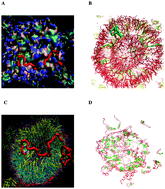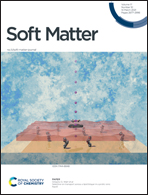Coarse-grained simulation of the self-assembly of lipid vesicles concomitantly with novel block copolymers with multiple tails
Abstract
We carried out a series of coarse-grained molecular dynamics liposome-copolymer simulations with varying extent of copolymer concentration in an attempt to understand the effect of copolymer structure and concentration on vesicle self-assembly and stability. For one particular case molecular dynamics simulation data was successfully verified against experimental NMR results enhancing the credulity in the simulation methodology. The study focused on a new class of promising copolymers based on ethylene oxide (EO) chains and short blocks of aliphatic double chains that mimic lipid tails. The lipid mimetic units are based on 1,3-didodecyloxy-2-glycidylglycerol (DDGG) and 1,3-didodecyloxy-propane-2-ol (DDP). The conducted simulations indicate that multiple lipid anchor-bearing copolymers lead to stable hybrid liposome formations. Single lipid bearing might incur liposome-stabilizing potential for relatively small ethylene oxide chains but fails dramatically in combination with a longer EO-based moiety. The consistency of the theoretical evidence with experimental NMR observation for certain cases provides confidence for the relevance of the methodology in eliciting the factors governing liposome-polymer stability which is of fundamental and practical significance.



 Please wait while we load your content...
Please wait while we load your content...